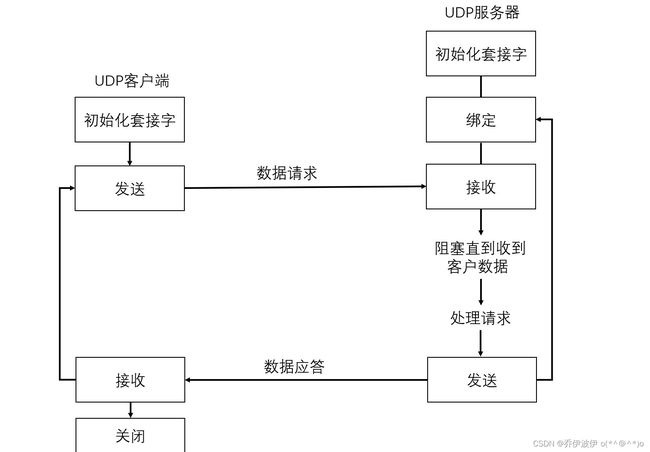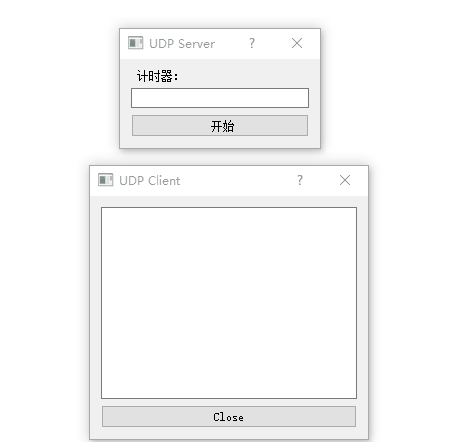Qt5开发从入门到精通——第十篇二节(Qt5 网络与通信—— 基于 UDP 的网络广播程序)
欢迎小伙伴的点评✨✨,相互学习c/c++应用开发。
博主 本着开源的精神交流Qt开发的经验、将持续更新续章,为社区贡献博主自身的开源精神
目录
- 前言
- 一、基于 TCP 的网络聊天室程序概述
-
- 1.1、UDP工作原理
- 1.2、UDP 编程模型
- 二、效果实例
- 三、原码解析
-
- 3.1首先先在新建好的工程文件xxx.pro文件中加入
- udpclient.h
- udpserver.h
- main.cpp
- udpclient.cpp
- udpserver.cpp
- 四、总结
前言
本章节会给大家带来Qt5 网络与通信—— 基于 UDP 的网络广播程序实例详解。
一、基于 TCP 的网络聊天室程序概述
用户数据报协议 (User Data Protocol, UDP) 是一种简单轻量级、不可靠、面向数据报、无连接的传输层协议,可以应用在可靠性不是十分重要的场合,如短消息、广播信息等。
适合应用的情况有以下几种:
- 网络数据大多为短消息。
- 拥有大量客户端。
- 对数据安全性无特殊要求。
- 网络负担非常重,但对响应速度要求高。
1.1、UDP工作原理
如下图所示,UDP 客户端向 UDP 服务器发送一定长度的请求报文,报文大小的限制与各系统的协议实现有关,但不得超过其下层 IP 规定的 64KB; UDP 服务器同样以报文形式做出响应。如果服务器未收到此请求,客户端不会进行重发,因此报文的传输是不可靠的。
请求
应答
UDP客户端
UDP服务器
例如,常用的聊天工具一腾讯 QQ 软件就是使用 UDP 发送消息的,因此有时会出现收不
到消息的情况。
1.2、UDP 编程模型
下面介绍基于UDP 的经典编程模型, UDP 客户端与服务器间的交互时序如下图所示 。
可以看出,在 UDP 方式下,客户端并不与服务器建立连接,它只负责调用发送函数向服务器发出数据报。类似地,服务器也不从客户端接收连接,只负责调用接收函数,等待来自某客户端的数据到达。
Qt 中通过 QUdpSocket 类实现 UDP 协议的编程。下面通过一个实例,介绍如何实现基于
UDP 的广播应用,它由 UDP 服务器和 UDP 客户端两部分组成。

二、效果实例
三、原码解析
3.1首先先在新建好的工程文件xxx.pro文件中加入
QT += network
udpclient.h
#ifndef UDPCLIENT_H
#define UDPCLIENT_H
#include udpserver.h
#ifndef UDPSERVER_H
#define UDPSERVER_H
#include main.cpp
#include "udpserver.h"
#include "udpclient.h"
#include udpclient.cpp
#include "udpclient.h"
#include udpserver.cpp
#include "udpserver.h"
#include 四、总结
Qt5 网络与通信—— 基于 UDP 的网络广播程序会在应用程序开发中经常用到的。
